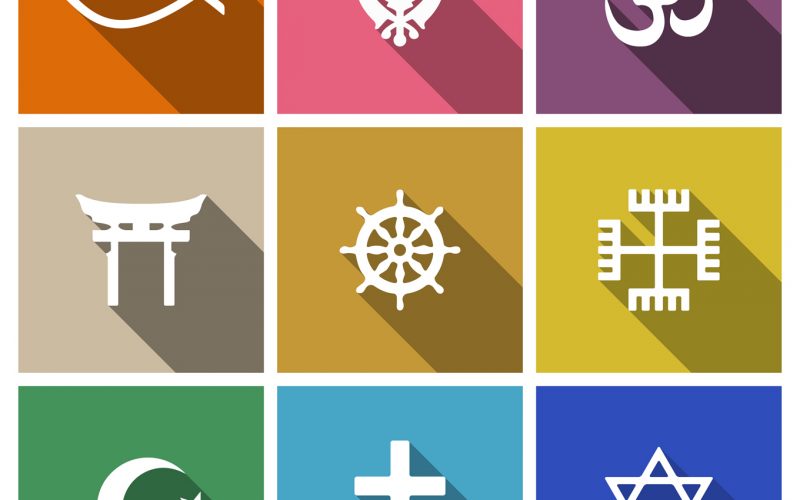
Shutterstock
Slowly, relentlessly, America’s culture is undergoing profound change. But the transformation mostly is under the radar, hardly noticed.
A new study by the Public Religion Research Institute and Religion News Service finds that the largest faith category in the United States now is people who say their religion is “none.” Apparently, this marks the first time in U.S. history for the churchless to reach top status.
Specifically, the PRRI-RNS report says the three chief groups among all ages in 2016 are: nones, 25 percent; Catholics, 21 percent; and white evangelicals, 16 percent.
Among young adults under 30, the gap is enormous: Nones, nearly 40 percent; Catholics, 15 percent; white evangelicals, 9 percent; white mainline Protestants, 8 percent; black Protestants, 7 percent; other nonwhite Protestants, 11 percent; and non-Christian faiths, 7 percent.
Many of the unaffiliated young adults say they simply don’t believe church dogmas.
As these younger Americans advance to middle age, the churchless segment is expected to increase. It surely will alter U.S. society. It has snowballed rapidly, unexpectedly. The report says:
“One of the most consequential shifts in American religion has been the rise of religiously unaffiliated Americans. This trend emerged in the early 1990s. In 1991, only 6 percent of Americans identified their religious affiliation as ‘none.’ … By the end of the 1990s, some 14 percent of the public claimed no religious affiliation. The rate of religious change accelerated further… reaching 20 percent by 2012.”
For senior West Virginians like me, who came of age after World War II, this secular tide is astounding. The world of our youth has been turned upside-down.
When I was a young adult, the only Americans who mattered were WASPs (white Anglo-Saxon Protestants). They were the overwhelming majority. Their laws and customs dominated everything. But now, they’ve dwindled to just 16 percent among those under 30, according to the PRRI-RNS figures. And they’re destined to keep shrinking as nonwhite Americans rise, the Census Bureau projects.
Politically, the situation is a mess. The “nones” strongly hold liberal, compassionate, progressive, Democratic values — but they tend to avoid voting. They shun politics as much as they shun church. The report says:
“By the last presidential election in 2012, religiously unaffiliated Americans had grown to comprise 20 percent of the public, but… comprised 12 percent of voters. By way of comparison, in 2012 white evangelical Protestants also comprised 20 percent of the public, but they accounted for more than one in four (26 percent) voters.”
While other American groups are more committed to political action, about one-fourth of “nones” aren’t even registered to vote.
“At the start of the 2016 general election season in early August,” the study says, “religiously unaffiliated voters expressed a strong preference for Hillary Clinton over Donald Trump (62 percent vs. 21 percent).”
Despite their low voting rate, “nones” have become the largest segment in the Democratic Party base. The report says:
“Among Hillary Clinton’s supporters, 7 percent are white evangelical Protestant, 12 percent are white mainline Protestant, 11 percent are white Catholic, 30 percent are religiously unaffiliated, and 15 percent are black Protestant.” (That’s only 75 percent of her backers. Perhaps the others are supporters whose religion isn’t known.)
It’s fascinating to watch the culture evolve. It’s tantalizing to wonder where America is heading. Keep reading the news and try to find clues about the transformation that is in progress.
James Haught, syndicated by PeaceVoice, is editor emeritus of West Virginia’s largest newspaper, The Charleston Gazette-Mail. The opinions expressed in this column are those of the author and do not necessarily reflect the views of The Free Weekly and its staff.



